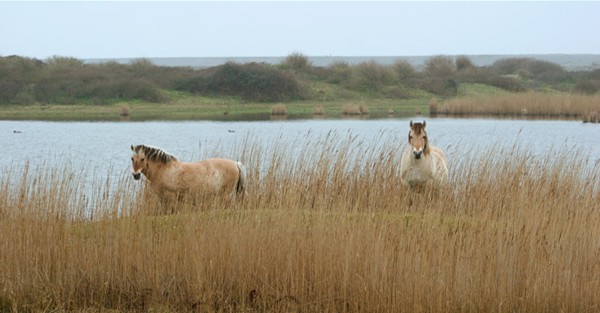My Kingdom for a Horse
Homo sapiens seeks equine companionship for work and pleasure

I was a girl on a horse.
Before we got our horse, my twin sister and I would have given our kingdom (or anyhow, one of our dolls) for a horse. Oh, for a horse.
Her name was Virginia. She was a large sorrel mare, a draft horse. She’d reached a certain point in her career, the point of refusing to work. The neighbors on the neighboring farm saddled with this stubborn old good-for-nothing gave her to us. (This took place during the 1950s, the Age of the Tractor, but these neighbors worked their horses.)
Virginia was strong, powerful, and beautiful. She cost us zilch to feed. (One horse added to 100 cows costs nothing.) She came with her tack. Was she happy to be ours? Of a summer evening, we’d call to her—grazing out in the pasture—and she would lift her head and point her ears in our direction and nicker.
Once when I was 12, Virginia and I were cantering down an old logging road. Virginia suddenly came to a full halt. I almost flew over her head. Five feet in front of us stood a stag with huge antlers—a white-tailed deer. He was stopped in his tracks, head held high. The standoff persisted for motionless minutes until—thinking horse and stag might fight—I shooed the stag away.
What is a horse? Kingdom: Animal. Phylum: Chordate. Class: Mammal. Order: Perissodactyl—an ungulate, a hoofed mammal, with an odd number of toes. Yes, that hoof is a single toe (evolved from three fused toes), and yes, the hoof the farrier trims is a toenail. Perissodactyls are distinct from even-toed ungulates such as cattle and deer. Family: Equidae. Genus and species: Equus caballus. All breeds of horses and ponies, whether domesticated or wild, belong to the same species.
A horse has mammal-type teeth and a special digestive system. This includes a stomach, a large intestine, a small intestine, a cecum (pronounced SEEK-um), and a colon. The cecum is full of bacteria that digest the cellulose of grass. Like the cow, the horse is a fermentation vat. But with a difference. The cow ruminates. The rumen is a large, forward part of the cow stomach. Cows chew cud by upchucking the microbial contents of the rumen and rechewing it. The horse’s cecum is behind its large intestine. Horses can’t regurgitate and don’t chew cud. The rumen is efficient but heavy; no one would stage a cow race. The cecum is light, and its resident microbes digest drier grasses. Horses can live on dry grasslands where cows cannot.
Where did the horse come from? It evolved from a Hyracotherium, better known as an “eohippus” or “dawn horse,” which appeared some 55 million years ago. This dog-sized mammal lived in Europe and North America (connected by Beringia or the Bering land bridge, now flooded by the Bering Strait). The horse evolved mostly in North America, but then returned to Europe over Beringia and continued evolving there.
Horses were here long before we were. Early Homo sapiens hunted them for meat and skin. It’s likely that horses were first domesticated in the steppes of Russia and the Ukraine, a vast, inhospitable grassland north of the Caspian and Black seas. This happened perhaps by 4800 BCE, long after cattle and sheep were domesticated. There lies a complex story, told in David W. Anthony’s book The Horse, the Wheel, and Language.
In North America, 10,000 or 12,000 years ago, the horse went extinct, making it Exhibit A in a sometimes bitter debate surrounding the reasons for the extinction of megafauna in North America. There are four hypotheses and too little evidence: (1) Climate change. The Ice Age was ending and in North America steppe grasslands were turning into forest, bad for horses. (2) Some dread species-jumping virus. (3) Human hunting. (4) A comet explosion in the atmosphere.
Spanish conquistadors returned the horse to North America in 1598, and the subjugated Pueblos peoples in what is now northern New Mexico learned to handle them. Some Pueblos escaped on horseback to neighboring tribes and upon the Pueblo uprising of 1680 the Spanish abandoned many horses. These escaped horses became the wild horses of the American West, and they transformed Indian cultures and economies.
The horse is central to the history of human warfare. And throughout recorded history, horses pulled and carried and hauled. Here’s a glimpse: on December 4, 1904, the Seattle Engineering Department conducted an inventory of vehicles crossing Second Avenue and Pike Street in downtown Seattle. The department counted 14 automobiles and 3,945 horse-drawn vehicles.
All the pretty horses. How they entered our history, our culture, our infrastructure, our imagination. For a time we girls became fixated on TV Westerns. We adored the novels Black Beauty and My Friend Flicka and Misty of Chincoteague. And we adored Virginia.

